Counting practice Geometry Worksheets for Ages 6-8
6 filtered results
-
From - To
Explore our Counting Practice Geometry Worksheets designed specifically for children aged 6-8. These engaging resources help young learners master essential counting skills while introducing basic geometric concepts. Each worksheet emphasizes both numbers and shapes, allowing kids to develop a strong foundation in math. Activities include counting shapes, identifying geometric patterns, and solving pictorial problems to enhance visual learning. Our worksheets are not only educational but also fun, making math practice an enjoyable experience for your child. Perfect for home or classroom use, these printable worksheets will foster confidence and enthusiasm in young mathematicians as they learn through play!


Let's Count Faces! Worksheet
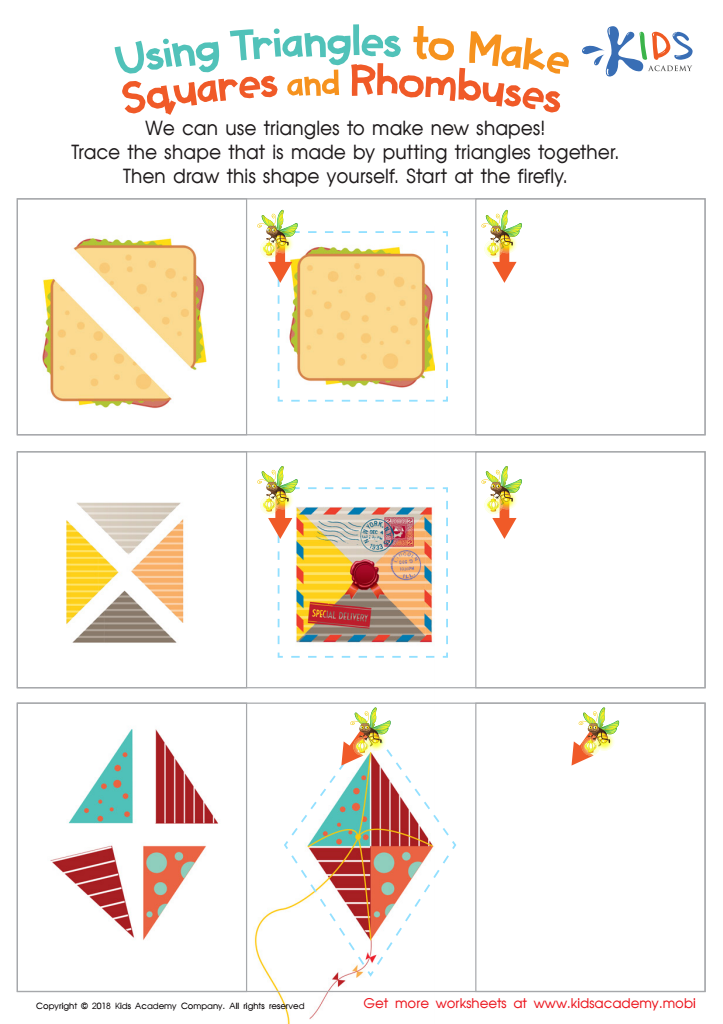

Using Triangles to Make Squares and Rhombuses Worksheet
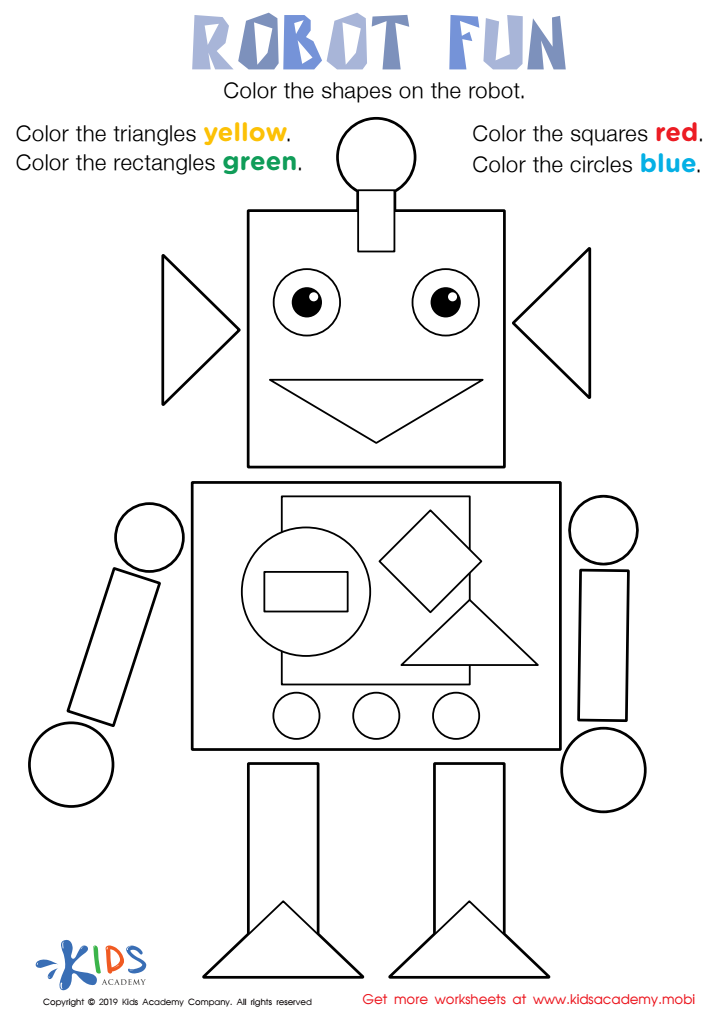

Robot Fun Worksheet
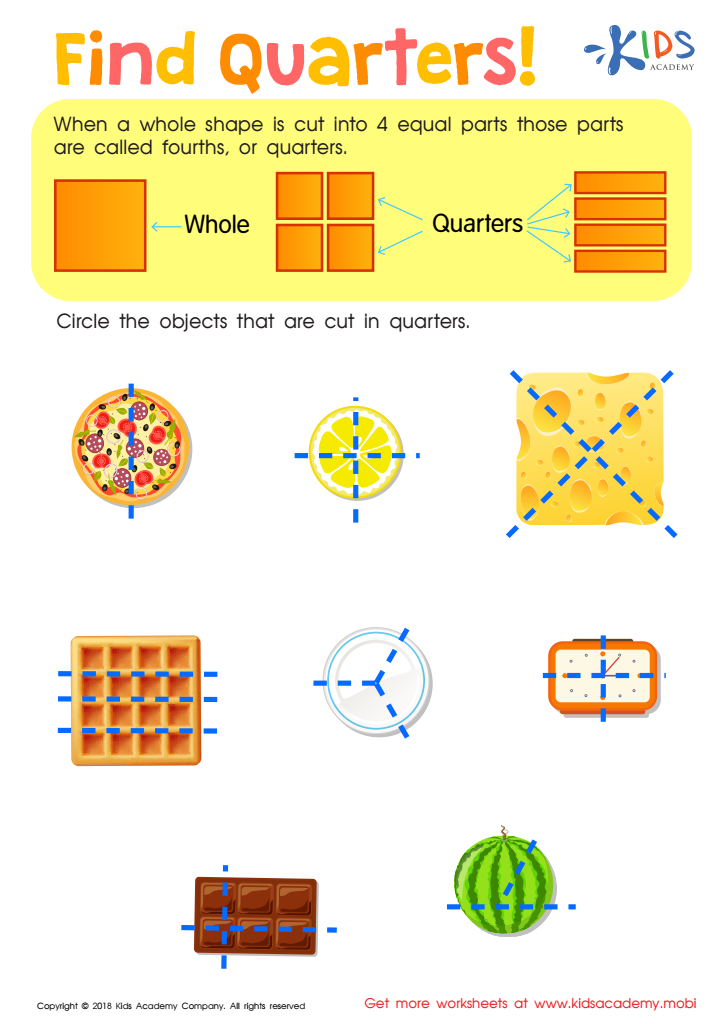

Find Quarters Worksheet
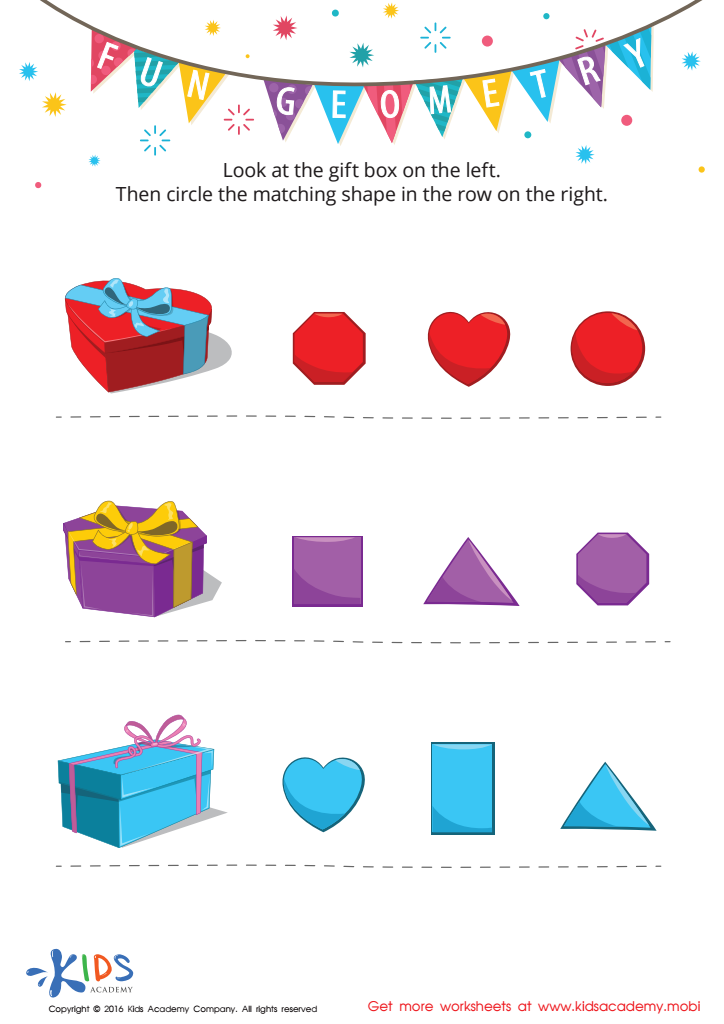

Fun Geometry Worksheet
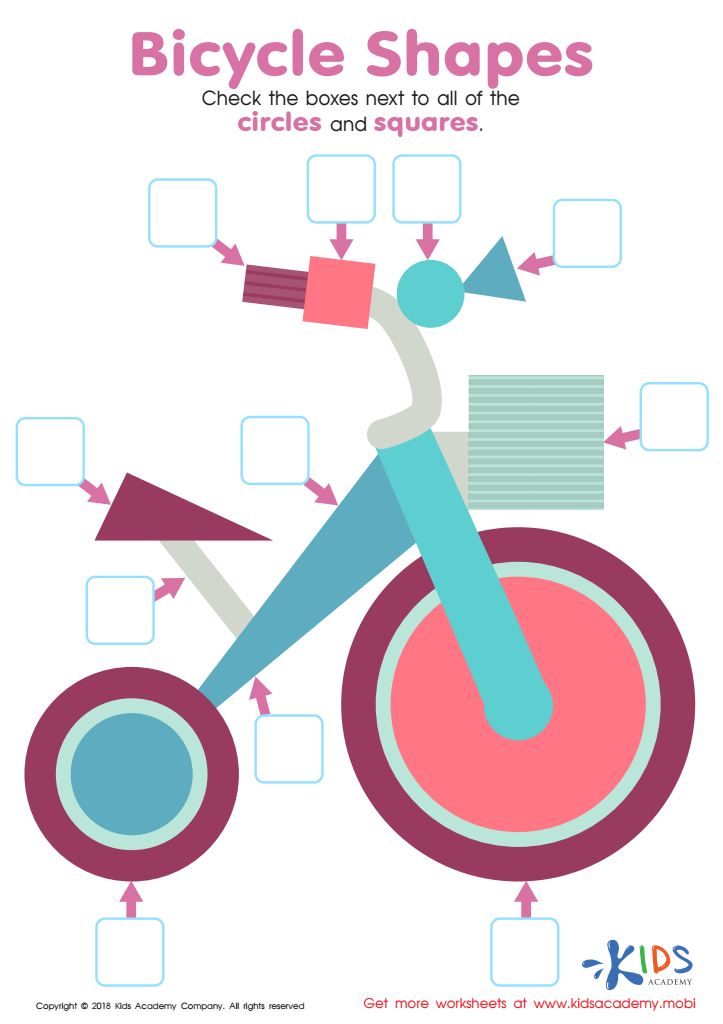

Bicycle Shapes Worksheet
Counting practice and geometry skills are fundamental for children aged 6-8 as they form the building blocks for more complex mathematical concepts. At this developmental stage, children are beginning to understand numbers, shapes, and spatial relationships, which are crucial for their overall cognitive growth.
Engaging in counting practice helps enhance children's numeracy skills, aiding them in recognizing patterns and understanding quantities. This foundational skill not only prepares them for higher-level math but also promotes critical thinking and problem-solving abilities. Geometry, on the other hand, allows children to explore shapes, sizes, and spatial relationships, fostering their spatial awareness. This can lead to improved skills in subjects such as science and art, where visualization and manipulation of objects are essential.
Parents and teachers should care about these practices because they create opportunities for interactive learning through games and hands-on activities, making math engaging and fun. This early exposure encourages a positive attitude toward mathematics, countering any fears they might develop in later years. Furthermore, understanding these concepts equips children with essential life skills, such as budgeting, reading maps, and understanding measurements, promoting a well-rounded education that values practicality along with theoretical knowledge.
 Assign to My Students
Assign to My Students































